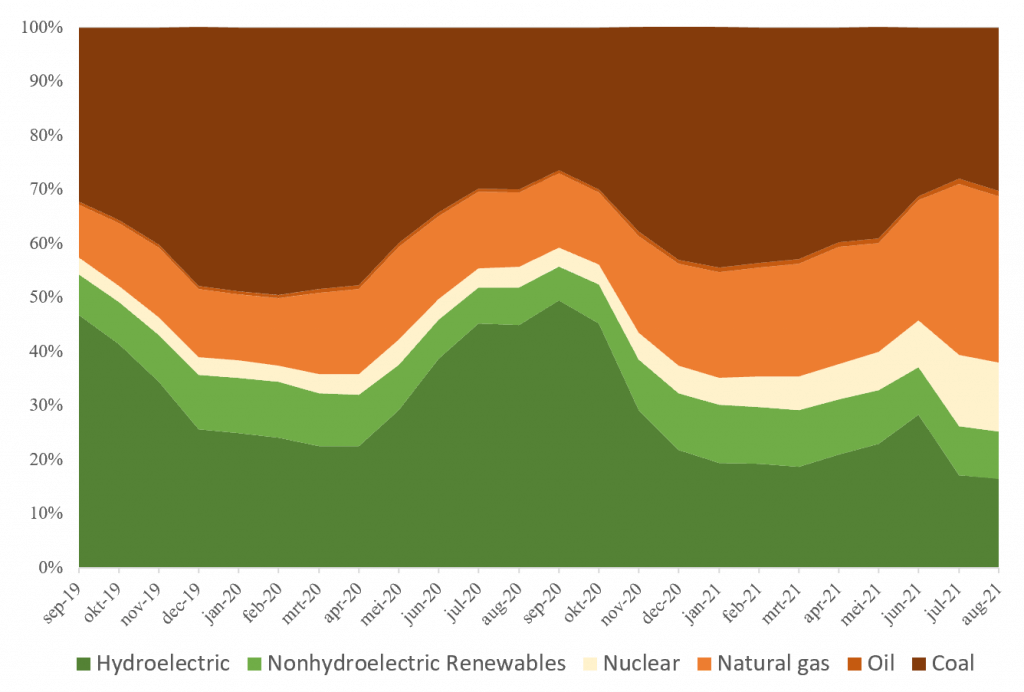

For many years, the Bitcoin community has argued that the network is running on a significant share of renewable energy sources. When China banned cryptocurrency mining in the Spring of 2021, Bitcoiners doubled down on this claim – arguing that the miners were forced to move to “greener” locations. Just recently, the Bitcoin Mining Council claimed that 58.5% of the electricity used by the Bitcoin mining industry is coming from renewable energy sources.
Even though the mining crackdown in China during the Spring of 2021 did shake up global Bitcoin mining activity, we can now establish that this crackdown drastically reduced the use of renewable electricity sources for Bitcoin mining. This is the conclusion of a new research paper on the electricity mix and carbon footprint of the Bitcoin network (titled Revisiting Bitcoin’s carbon footprint) that was published in the Elsevier journal Joule on February 25, 2022.
The article specifically finds that that the share of renewables that power the network decreased from 41.6% to 25.1%. Miners previously had access to a substantial amount of renewables (during a limited part of the year) when they were still in China (i.e. hydropower during the wet season in the summer months), but this was lost when they were forced to move to countries such as the U.S. and Kazakhstan. These locations now mainly supply Bitcoin miners with either coal- or gas-based electricity, which has also boosted the carbon intensity of the electricity used for Bitcoin mining. The article highlights that the average carbon intensity of electricity consumed by the Bitcoin network may have increased from 478.27 gCO2/kWh on average in 2020 to 557.76 gCO2/kWh in August 2021. This means the carbon intensity of mining has gone up by around 17%.

Using these carbon intensities, it is found that the Bitcoin network could be responsible for 65.4 megatonnes of CO2 annually, which is comparable to country-level emissions in Greece. If we were to divide this figure by the number of transactions handled by the Bitcoin blockchain in 2021 (97.7 million) it would result in a carbon footprint of 669 kilograms of CO2 per Bitcoin transaction (comparable to the per passenger footprint of a flight from Amsterdam to New York).
As a result of these findings, the carbon footprint of the Bitcoin network provided by the Bitcoin Energy Consumption Index has also been adjusted to reflect the increased carbon intensity. The full article as published in Joule can be accessed for free for a period of 50 days using this link. Afterward, free copies can be requested through Researchgate.